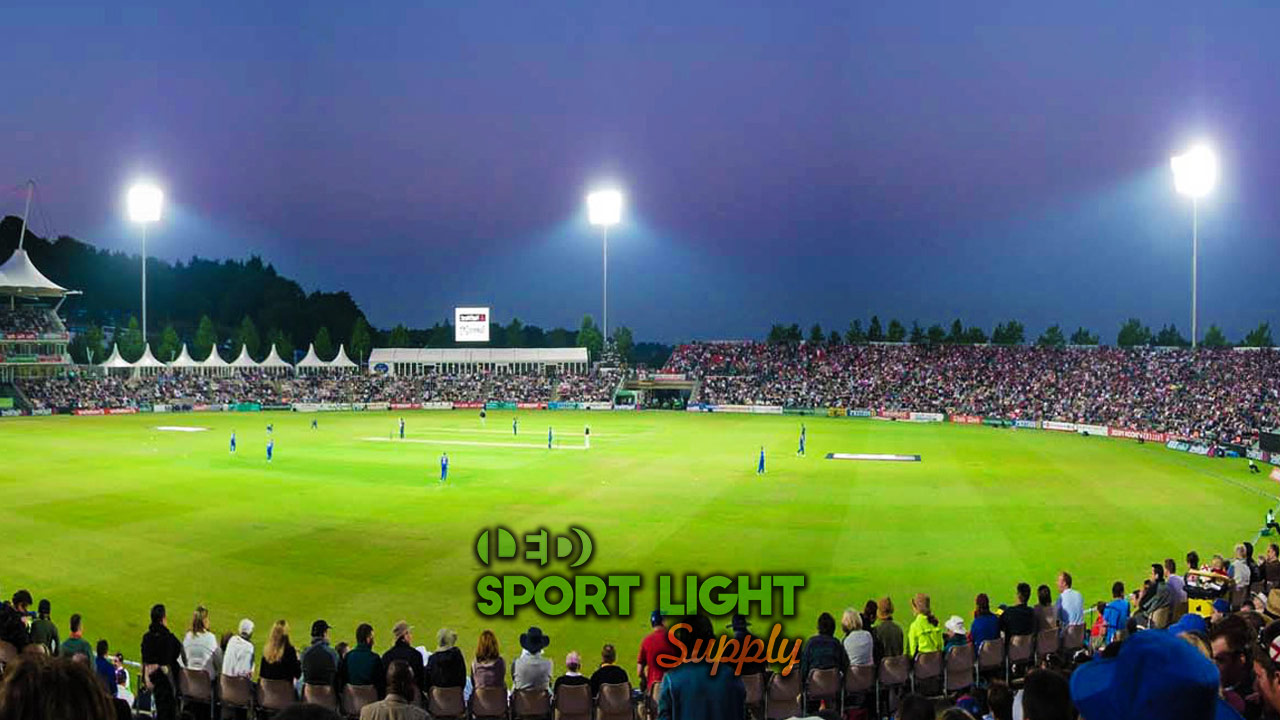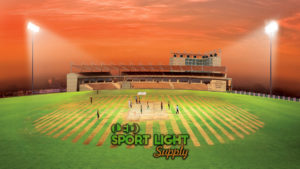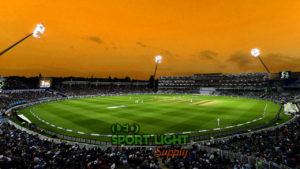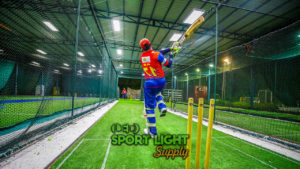In many communities, you can find varying cricket lighting standards. To be precise, the lighting classes can vary in each cricket facility. For example, a cricket stadium lighting might host televised games. So, it may require standardized brightness for television broadcast.
Luckily, lux and footcandles values come to the rescue. They show us the most suitable illuminance level for a cricket field. But as you might know, the cricket ground can also vary in size. That is, the level of competition influences these parameters.
Here are all the relevant queries about the tech info and metrics on lux levels. To begin with, an explanation opens the discussion about what is a lux level on a cricket court. Then, the specific light levels for outdoor and indoor cricket facilities will follow. Finally, a section on the importance of proper maintenance and one about how to measure these levels conclude it all.
What is lux?
In photometry, the lux is a SI unit of illuminance. On a cricket field, lux values indicate the light intensity of the artificial lighting. Basically, lux measures the quantity of light in a given spot on the field.
If you place a light source in one place and then take several steps away from it, the light intensity will decrease. More likely, you want the cricket court to be bright enough for the batters and bowlers of both teams to see. So, you install more floodlights all around the stadium to illuminate the cricket pitch. Well, you need a way to calculate all that brightness. And you use a tool to do that.
Later, you will find out how you can take a lux reading in the cricket stadium. But first, here is a clarification. One lux is equal to the ratio of one lumen to one square meter. As you might know, lumens describe how bright a light source is. Instead, lux readings refer to the illuminated object. In other words, lux values vary with distance.
Lux level required for outdoor cricket stadium lighting
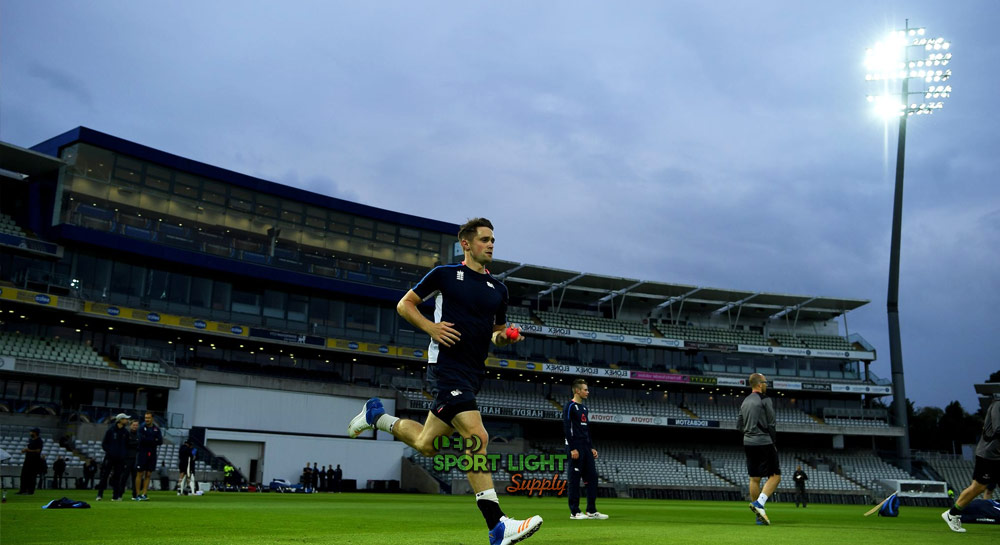
The lighting criteria for outdoor cricket include different classes. But before I introduce every single class, here is some general info about the desirable illuminance.
First of all, the lighting conditions decay over time. That is to be expected, but the following data refer to maintained illuminance. So, in a new cricket stadium, you should find even higher values than the minimum averages I am going to share. Similarly, the light sources should have a Color Rendering Index of 90 or higher. A minimum of CRI (Ra) 65 is necessary at all times to reveal the colors and contrasts in the cricket pitch.
Of course, you also need to keep the uniformity gradient below the 20% threshold. In other words, the horizontal brightness must not vary more than 20% in two adjacent areas in the cricket ground. And to ensure a comfortable vision, the maximum glare rating is 50. Any more than that would cause discomfort glare.
Finally, I am going to use the footcandle unit as well. For anyone living in the US, let me remind you that 1 footcandle = 10.76 lux.
1. Class I – 750lux
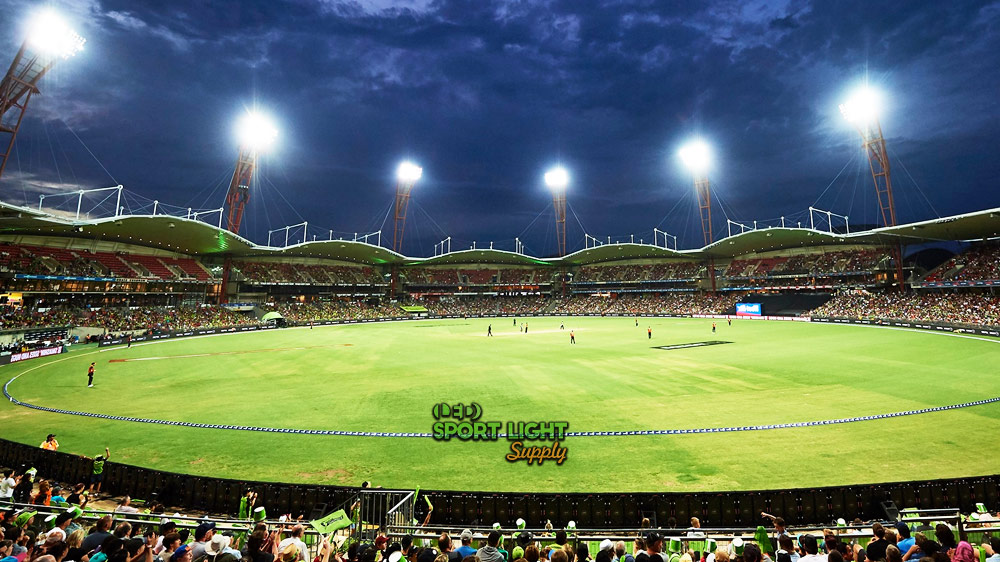
Class I applies to outdoor international and domestic games. Including Premier, First Class, regional, state matches, and top-level training. You can associate the first class with non-televised events to help you remember. Think high-level competitions with many spectators in the stands. In other words, a big cricket stadium with a roaring crowd and long viewing distances.
Mainly, it follows the EN 12193 lighting standard. The average lux in the cricket pitch must be 750 lux or 69,70 footcandles. In the outfield, the average lux can decrease up to 500 lux or 46,48 footcandles. Regarding the lighting uniformity,
U1 (minimum illuminance/average illuminance) must be:
- 0.7 in the infield
- 0.5 in the outer cricket ground
U2 (minimum illuminance/maximum illuminance) should be:
- 0.5 in the cricket pitch
- 0.4 in the rest of the cricket field.
2. Class II – 500lux
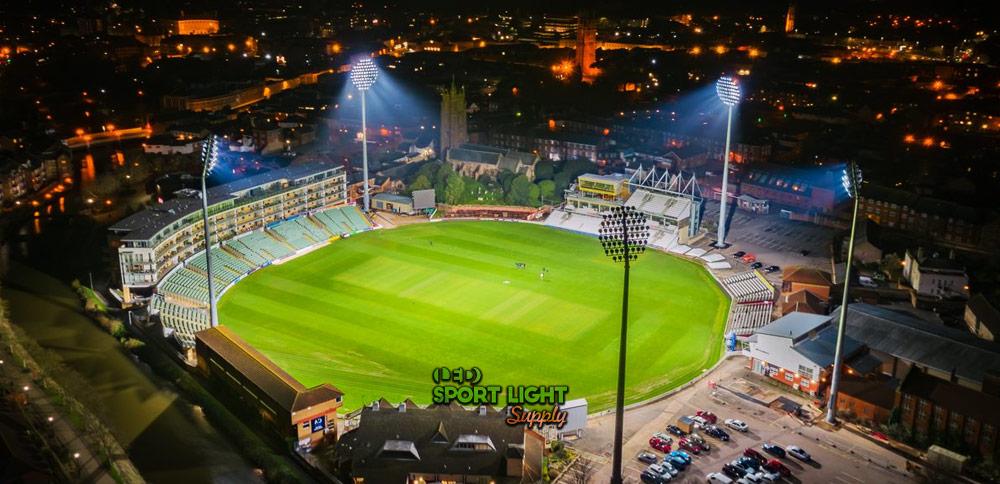
Class II applies to club competitions and First Class training use. Like Class I, this lighting standard is not suitable for television broadcast. In fact, these parameters suit a modest cricket stadium with medium viewing distances. Think youth competitions and finals with a medium crowd in the stands. The brightness level is still good, but the cricket field gives lower lux readings.
Class II still follows the European lighting standard EN 12193. In the square, the average lux must be 500 lux or 46,48 footcandles. In the outfield, an average lux of 300 lux or 27,88 footcandles is still acceptable. U1 and U2 values are the same as for Class I. That is, U1 = 0.7 (infield) and 0.5 (outfield). U2 = 0.5 (infield) and 0.4 (outfield)
3. Class III – 300lux
Class III applies to local club competitions, rec, and training use in any cricket association or club. In short, it is a basic lighting standard for national youth competitions and programs. Think about any sports venue where children play with no spectators or some family members in the stands. Of course, it can apply to junior and local seniors competitions and rec use as well.
Class III uses the lighting standard EN 12193 as a foundation. In the square, the average lux must be 300 lux or 27,88 footcandles. In the outfield, an average lux of 200 lux or 18,58 footcandles is ok. U1 values for the cricket pitch is 0.5 and 0.3 for the outfield. Instead, U2 must be 0.5 in the square and at least 0.3 in the rest of the cricket court.
4. Match practice – 200lux
Match practice refers to cricket training. Of course, junior and senior bowlers and batters need to practice and develop their skills. So, they need enough brightness for safety reasons and to simulate the official game lighting conditions. There are no spectators here, only young people learning to play cricket. Usually, a few strategic floodlights offer an adequate illuminance level. The most basic lighting design uses a 4-pole layout.
Match practice has very basic lighting standards. Everywhere in the cricket ground, an average lux of 200 lux or 18,58 footcandles is expected. What is more important is the lighting uniformity on the cricket field:
- U1 = 0.6
- U2 = 0.4
For cricket training and match practice, consistent illuminance is critical. It helps players to focus on bowling and dismissal. All-rounders get to hone their approach skills, and batters get to practice their back foot stance.
5. Non-body contact training – 100lux
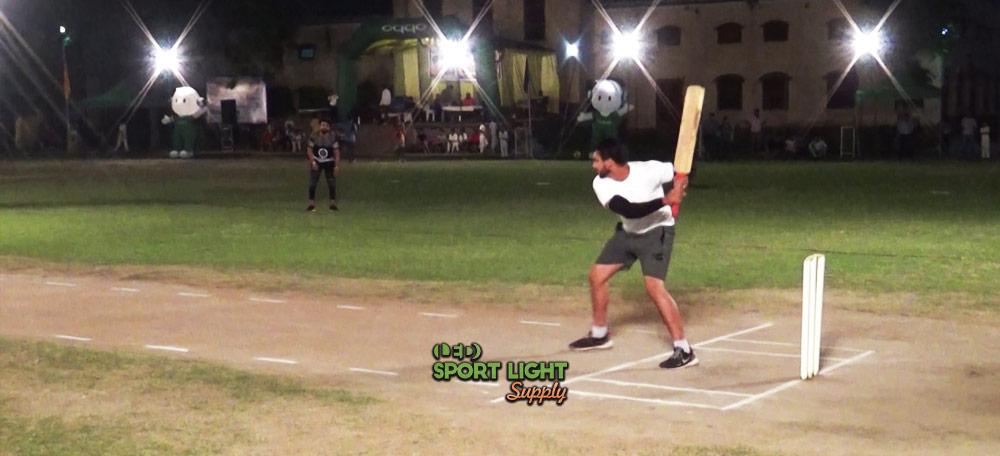
The 100 lux installation is intended for social activities. That is, any program or event that does not imply high-risk factors. For example, ball training with no elite players. Or any cricket activity that involves the use of special protective equipment such as pads and helmets. Basically, any training session that makes use of visual aids to teach the game in a tranquil place. And of course, as the name implies, any non-body contact activity as well.
Regarding the tech details of this lighting class, you require 100 lux or 9,29 footcandles on the cricket ground. In the cricket court, you should aim for a U1 of 0.5 and a U2 of 0.3. Because this lighting standard is minimal, regular testing should be performed more often in the cricket oval.
Lux level required for indoor cricket court or practice net lighting
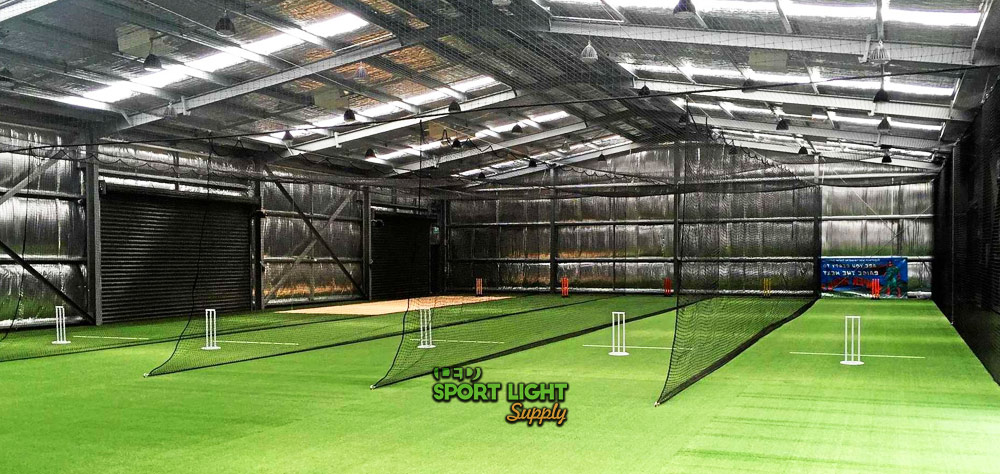
Here is a short list of the indoor cricket court lighting requirements. Like outdoor cricket field lighting classes, these light levels include a lux level and the relative U1 value. Also, they apply to cricket facilities with a 4.5 m high ceiling and a cricket court with these dimensions: 30 x 12 meters.
The ball in use is a key factor. In fact, a harder ball can pose a safety risk and requires higher light levels to ensure the players’ safety. So, you will read about two recommended standards. The lower one is always related to the use of softer, modified cricket balls. Finally, the same values apply to the practice net lighting standards as well.
1. Class I
International and national (top-level) competitions use an average lux of 750 lux or 69,70 footcandles with a U1 = 0.7. For the use of a standard hard cricket ball, the average lux value rises to 1500 or 139,40 footcandles and U1 = 0.8.
2. Class II
Regional mid-level competitions require an average lux of 500 lux or 46,48 footcandles. U1 must be 0.7. The higher lighting standard version is 1,000 lux (92,93 footcandles) and U1 = 0.8.
3. Class III
Low level or local club indoor use needs 300 lux or 27,88 footcandles with a U1 = 0.7. When using a hard ball in the cricket court, use at least 750 lux (69,70 footcandles) and a U1 of 0.8.
The importance of maintaining the required cricket stadium lighting lux levels
1. Better vision for cricket players and spectators
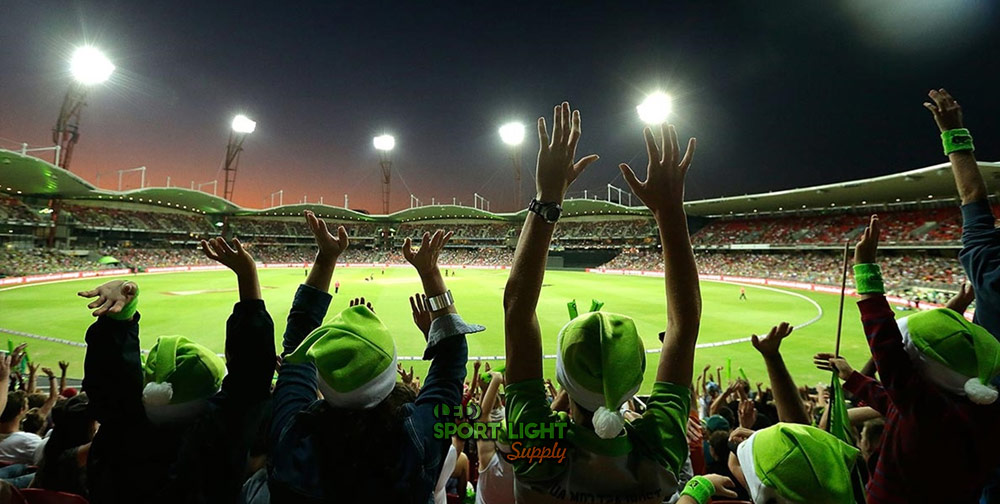
A comfortable vision benefits both the cricket stadium owner and the spectators. In fact, the right illuminance level makes the game more engaging. In other words, it attracts more attention and more profits.
A lack of glare within the players’ field of vision ensures a smooth run of every match. At the same time, bowlers and batters can perform to their best abilities. This also helps the two umpires to make their decisions about byes, boundaries and catches.
On the contrary, impaired visibility is frustrating for both the audience and the teams. Excessive brightness could lead to installing shielding, thus becoming a burden on the budget.
2. Better picture quality for TV broadcasting
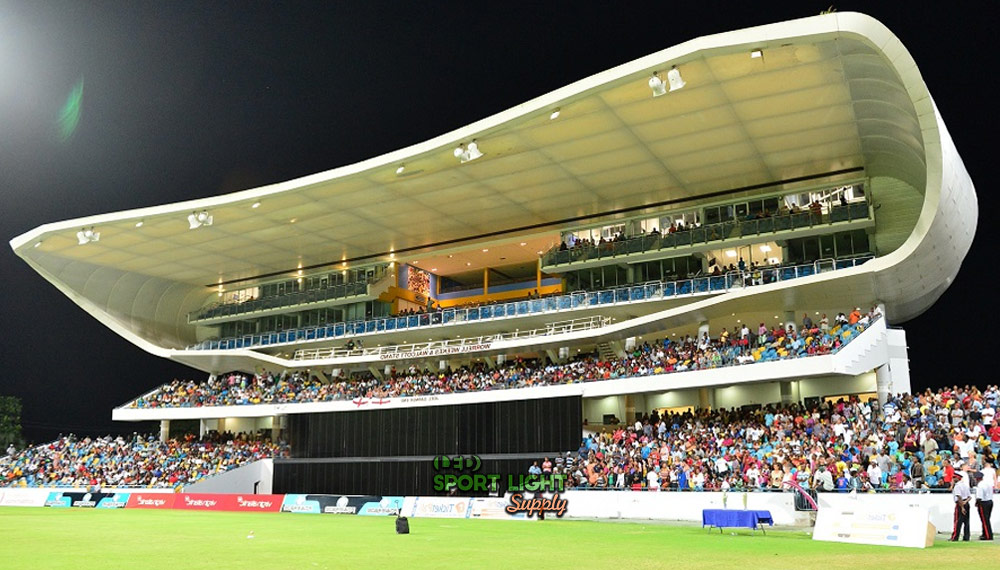
TV broadcasters rely on captivating pictures and perfect shoots. And the cricket stadium lighting design handles that. Above all, it should always take TV broadcasting into account. At the very least, if the owner wants the stadium to host top level matches at all levels.
The cricket pitch brightness level should provide an adequate level of illuminance. That is, a level in line with the national guidelines for broadcast. After all, the audience wants to see every moment in order to agree or disagree with the umpire’s calls.
Only a suitable illuminance level allows for high-quality pictures and replays. Moreover, TV broadcasters use multiple video cameras. So, they require excellent lighting conditions from several angles.
3. Create an atmosphere
Each inning involves all eleven players of a batting team. When the batter is eliminated, another teammate steps in the cricket field. This goes on until the tenth batter is eliminated, and the eleven opponents who bowl and defend the field (fielder) win. Or lose the game.
Just imagine what that would look like without the proper illuminance level. Most likely, it is hard to see the ball when batting or defending. The spectators would be confused most of the time, wondering why the umpires stopped the action.
Creating an entrancing atmosphere is key to make players and spectators enjoy themselves. But, you require enough brightness to prevent any glare or obstacle that might hinder the flow of play. Besides, remember that after the break, both teams return to the cricket ground with reversed roles. So, you want to keep the same light intensity throughout the match for the best results.
4. Shadowless illumination
If the teams do not play in a cricket stadium, shadows could be a problem. Trees, nets, and other overhanging disturbances may cast shadows over the cricket court. So, the cricket field lighting can serve as a support light for shadowless illumination.
Then again, top-level competitions require shadowless illumination to assist the batter’s vision. Soft shadows are acceptable and better than hard shadows. Usually, a lighting layout takes care of this issue in the planning phase. Several floodlight pole locations achieve shadowless lighting easily.
In this regard, the luminaire mounting positions play a critical role in the design process. Careful planning of the cricket stadium illuminance level should involve different light sources. For example, flood lights and spot lights for outdoor venues, and high bay lights for indoor cricket courts.
5. For cricket player’s safety
It is not uncommon to find holes and loose or wet dirt in an outdoor cricket field. Even on the indoor cricket turf, it is easy to stumble and fall. Think of fielders jumping and running to catch the ball. Indeed, a wicketkeeper might try to get the best out of the glove and not give enough attention to the field conditions.
In this case, brightness equals players’ safety. Especially for youth cricket programs. The suitable lux level provides the players’ ability to spot any issue in the cricket court.
Adequate illuminance must be designed to prevent injury. For this reason, high power LED lights are positioned at varying distances. LED floodlighting keeps the cricket ground free from obstacles, such as the high mast light poles.
6. Security
Lux levels also guarantee security. As you know, the cricket oval attracts all the attention. Especially of every spectator in the stand. So, a thief could find the stands to be the perfect place for his or her misdeeds. But luckily, a smart illuminance design minimizes the chances of this problem happening.
Generally speaking, you do not need to own a cricket stadium to benefit from using the proper lux level. In fact, you can use floodlights that automatically turn on and off when daylight goes out. The dusk to dawn function is ideal for anyone practicing in the late afternoon.
Cricket clubs can count on the light sensors for illuminating any area of the cricket field where someone is training. In this way, a batter would not accidentally miss spotting someone who is running in the outfield before striking a ball.
How to measure lux levels in cricket stadium
1. By lux meter
The lux meter is the most used instrument in lighting tech. Think of it as a sort of magic wand through which one can measure the illuminance values of a specific cricket field area.
Any consultant or lighting designer who regularly carries out lighting projects owns one. It usually consists of a photocell that converts the luminous flux into an electric current. This current gets amplified to allow reading of even very low brightness values. Finally, a microammeter calibrated in lux detects the current to give you a precise reading.
Sometimes, a periodic luminance meter calibration is necessary. Most models come with clear instructions about how to calibrate or check the measuring accuracy.
2. By smartphone app
If you want to do the readings yourself, you can use a smartphone app. These apps use your video camera sensors to gauge how much brightness is around you at the time of the reading.
Using these apps is similar to using a lux meter. Basically, you go in each sampling point in a 30x30ft grid to measure the lux value at the ground level.
In detail, you put the lux or smartphone meter onto the ground. The device needs to be completely horizontal and undisturbed. Then, you can pick it up and move to the next location. You require to record each lux reading to then calculate the average illuminance and get the maximum and minimum lux values.
Conclusion
Once you have all the lux readings on your cricket field, you can calculate the rest. For example, you can divide each reading by 10.76 to get the footcandle equivalents. As previously mentioned, you can calculate U1 and U2 to check if your cricket stadium needs more brightness. You should not go lower than the recommended lighting classes. But remember that excessive illuminance can lead to glare problems.
Use the most suitable lux level for the outdoor or indoor cricket court according to your level of play. You do not require any more than that to host or enjoy a wonderful game.

